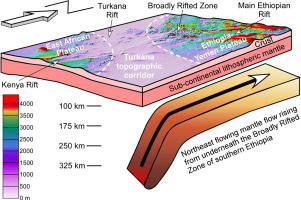Geophysics
Computational and Data-Driven Geophysics

Since the 1960s, it has been well established that the Earth’s hard outermost shell (a.k.a. the lithosphere which is a layer of about 100-250 km thick of relatively cold and hard rocks) is broken into 7 large and numerous small pieces termed as tectonic plates. Relative movement of up to tens of centimeters per year over millions of years along the boundaries of the plates (such as the San Andreas Fault in California which separates the Pacific and North American plates) produces more than 90% of all the earthquakes and volcanoes. However, the mechanisms driving plate motion are still poorly understood. This project aims at imaging Earth’s interior mechanical anisotropy and layered structures through intensive computer processing of elastic waves produced by earthquakes and recorded by tens of thousands of seismic recording stations worldwide.
Seismic azimuthal anisotropy of the Earth’s mantle beneath the North American, South American, African, and Eurasian plates will be characterized using a shear-wave splitting technique to explore the relationship between plate motion and mantle flow. The topography of the 410 and 660 km discontinuities, which represent abrupt changes of phases inside the Earth’s mantle, will be measured beneath the four tectonic plates using P-to-S converted waves with unprecedented spatial resolution to quantify temperature anomalies associated with mantle thermal upwelling and downwelling. Most of the research projects involve computer-intensive processing and inversion of terabyte-scale geophysical (mostly seismological) data recorded by thousands of recording stations.
Principal Investigator
Stephen Gao
Professor
B-35 McNutt Hall
Dr. Gao's research emphasizes the combination of geology, physics, mathematics, and computer science to explore the Earth. We image the structure of the Earth's deep interior using elastic waves produced by earthquakes, and study the distribution of earthquakes and volcanic eruptions in space and time.
